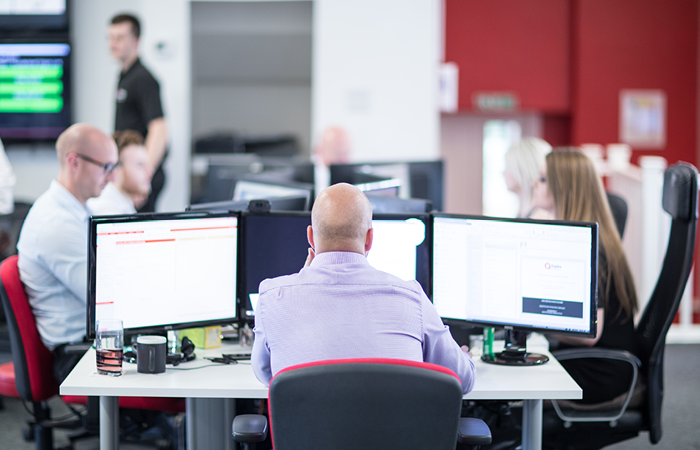An enormous unplanned worldwide experiment is coming to an end—and a fresh one is about to begin. After months of employees working from home, businesses are beginning to think about their Covid-19 transition plans for heading back to the office.
The two things differ in important ways, and not just in terms of their outcomes.
The transition to working from home was abrupt: here in the UK, much of it happened over a period of ten days or so, beginning with businesses exercising a sense of caution, and ending with a government mandate. Returning to the office will almost certainly be more gradual.
The degree of planning differs, too. As our recent remote working customer survey confirmed, while relatively few businesses were totally unprepared for the switch to working from home, two-thirds felt that they could have been better prepared. For the return to the office, it’s likely that planning and preparation will have to be more complete, not least in terms of hygiene and social distancing—hence the importance of a plan.
Finally, it’s also clear that for many businesses, once the return to the office begins, ongoing working arrangements will be a hybrid mixture of working from home and office-based work, possibly permanently, and certainly for the foreseeable future. Making decisions on personal and corporate device use is important, especially when employees are switching between the home and office, and are required to use their own devices at home.
Covid-19 transition plan: digital infrastructure
Here at Aspire, we’ve been giving a lot of thought to our own transition plan, as we prepare for the return to the office, not least because it affects us too, but also because our customers will need us to be able to assist from a technology point of view.
If (as seems likely) ongoing working arrangements do become a hybrid mixture of working from home and office-based work, the technology considerations are considerable.
Going into lockdown, anything went: with little notice, employees fired up laptops and home computers in makeshift home offices, and set to work.
But the so-called ‘new normal’ will demand something more robust, with appropriate security, bandwidth, backup, and reliability. At the very least, businesses are likely to be making investments in video-conferencing as an alternative to physical travel. And with employees working from home as well as back in the office, security will be a key consideration—especially in terms of confidential data stored on home computers.
Covid-19 transition plan: other things to think about
Four other points are worth making, as you develop your plan to return to the office:
1. Communication is important. Keep employees up to date with your plans, and how your business is preparing for a safe and effective return to the office, especially in terms of timescales, investments in personal protection, and technology provisioning. Here at Aspire, we’ve introduced a regular webcast for employees to do just that.
2. Policies and protocols will need revising and updating. Greater attention will need to be paid to cleanliness, hygiene, and social distancing. Policies laying out expectations in these areas will almost certainly be required. You’ll likely need a ‘working from home’ policy, too. And with working from home becoming more routine, it’s important to be clear about data security, GDPR, and backing-up.
3. Plan for a phased approach. Bringing people back gradually, rather than all at once will allow you time to work out any issues that arise. To me, it seems sensible to prioritise departments that support business-critical processes.
4. Shared computers and hot-desking won’t cut it. Even with enhanced sanitation, employees are likely to demand more control over their physical environments—and in some cases, it may be appropriate to permit the use of personal laptops, if that is what employees feel comfortable with. Again, security and data back-up implications will need thinking-through.
We can help
In short, there’s a lot to consider, and not all the answers are obvious. For a successful transition back to the office, it’s best to start the planning and preparation process early, and take care to include the views of functions and managers across the business.
Your IT department are clearly going to be involved, as are HR, as are your facilities management people. As ever, we at Aspire have a deep bench of relevant capabilities and experts—and we’re also aware of relevant best practices across our extensive nationwide customer base.
So, for expert help and advice, don’t hesitate to get in touch.



